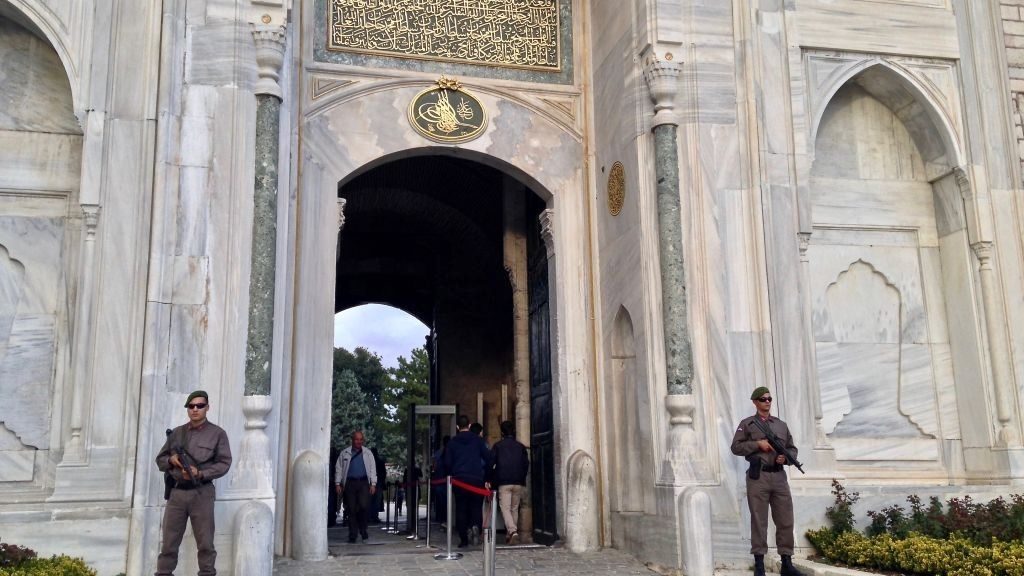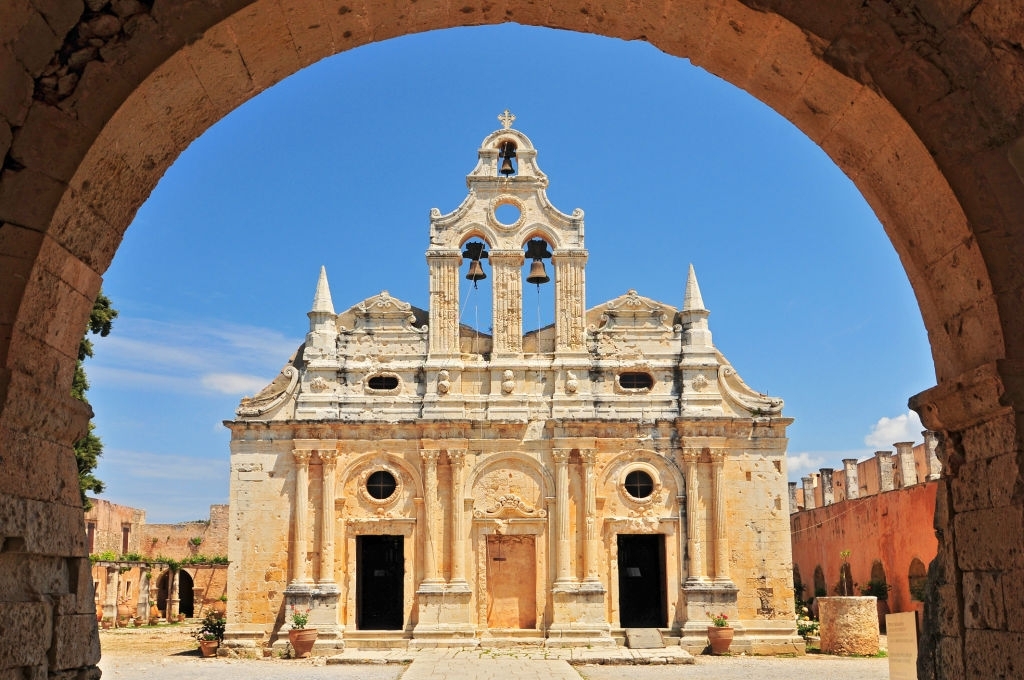
Ottoman rule
The city of Heraklion, the last main Venetian stronghold on Crete, fell in 1669, after what was possibly the longest siege in history. Bloody struggles and uprisings against the Ottoman rule led to the autonomy of Crete in 1898. This period continued until 1913 when the island achieved union with the rest of Greece.
Ottoman rule
Crete was under constant threat of invasion by the Turks during the last decades of Venetian occupation. The invasion began in 1645 with the attack in Chania, when more than sixty thousand (60,000) Turkish soldiers landed in an area near the city. Shortly afterwards, the Turks moved east to their next target, Rethymno, which fell a year later. By 1648 the whole island was under Turkish occupation, except for Chandaka which seemed invincible with its excellent defence system, and the fortress of Koule. Nevertheless, the besieged Venetians and Cretans were in dire straits. During that time, Christian Europe helps them and the Venetian fleet manages to keep the port open so that the city can receive supplies. The bombing, however, does not stop day and night, while the aqueduct that transports water from Agia Irini – a little south of Knossos – is destroyed. However, the reinforcements and supplies coming from the port keep the defenders of the Castle alive, who managed to counterattack and caused great damage to the enemy. Already in the 18th year of the siege, the Sultan grows frustrated with the situation and recalls his general, beheads him, and appoints in his place the Grand Vizier Ahmet Kioproulis.

The fall of Candia
The Christians, both Orthodox and Catholics, are united in resisting the Muslim threat. But what weapons and threats cannot stop, money does. Ahmet Kioproulis distributes 700,000 gold coins and entices many Christians to his side. Among them is Colonel Andreas Barotsis, who knows in detail all the weak points of the fortifications of Chandakas. With his information, the Ottomans are able to secure a strategic advantage and so the Great Castle (Heraklion) whose siege lasted twenty-one years, falls.
The longest siege in European history comes to an end on September 27, AD 1669. The long-drawn battle for the city cost the lives of 117,000 Turks and 30,000 Greeks and Venetians.
The fall of the city was followed by extensive material damage. Churches, monasteries and entire villages were ruined, while the roads and fortifications of the island were gradually abandoned. Crete was left with a pile of rubble and a new, and far worse period of slavery began for the island. During this period, many of the islanders fled to escape Ottoman persecution, while thousands more were imprisoned, sold as slaves, or sought refuge in the island’s inaccessible, mountainous areas. The oppression and economic extermination of the Christian population – through the huge taxes imposed – led many of them to renounce their faith and become Muslims. These became known as Turko-Cretans and often surpassed the Turks themselves in fanaticism and arrogance. Moreover, after the Turkish conquest, a large number of Ottoman settlers began to arrive on the island, who in turn contributed to the decline and reduction of the Christian population.
The period of Turkish occupation was financially draining for the whole island, mainly due to a lack of trade. The primary crops produced on the island at that time were controlled exclusively by the Turks who used them exclusively to feed their troops. Livestock rearing was also significantly reduced, limited only to mountainous and inaccessible areas to avoid Turkish control. According to their established tactics, the Turks also abolished the social organization and hierarchy that existed in the region. The enslaved population reacted by rallying around their deeply rooted family ties. At the core of this Cetan form of social organization was the couple and around it the family groups of uncles and cousins. Each clan had its own settlement in each village and operated around a compact social group with various familial obligations and duties. Even today if one visits one of the inland villages and asks the inhabitants how many “families” the village has and where they live, one will notice that each village has specific and limited in number “families – clans” and each family shares a small part of a neighborhood in the village.
Life in Ottoman Crete
Crete was a separate district (vilayet) of the Ottoman Empire with the seat of the pasha in Chandakas (Great Castle). Its church, which the Venetians had included in the ranks of the Papal Church, returned to the Ecumenical Patriarchate of Constantinople, with the seat of the Metropolitan of Heraklion and the re-establishment of the old dioceses.
The Turks exercised power by placing, in the most affluent villages of each region, the Agades. These were famous veterans, cruel lords and often ruthless in the exercise of power. Following the Venetian standards, the Turks also appointed a Cretan administrator in each Province. He was the authorized representative of the local population and the one who came in direct contact with the Agades to settle the various cases. As can be expected, the harsh conditions resulted in continued resistance against Turkish rule. Many young people whose families had suffered in the hands of the Ottomans, fled to the mountains of Crete to avoid persecution and formed guerilla resistance groups. Their activity was marked around sudden raids against the Ottoman rulers, which gave hope to the oppressed Christian population. These young rebels, known as “Chainides”, became the fear and terror of the Turks.
Daskalogiannis Revolution
Gradually, the resistance on the island started to organize, similar to other parts of Greece that were also under Ottoman occupation. Ioannis Daskalogiannis led the first great revolution in Crete, in 1770, which while initially successful, was eventually suppressed by the Turks. Daskalogiannis suffered a gruesome death and has been immortalized in various songs, for his heroic sacrifice. His name is also given to the International Airport of Chania. The revolution was followed by large-scale acts and operations of revenge by the Ottomans against the Christian population on the island. Crete also had an active role in the Greek revolution of 1821. However, its geographical location did not help, as it was cut off from the rest of Greece and finally found itself at the mercy of the Pasha of Egypt. The island did not become part of the Greek state, founded in 1832, but instead passed into the hands of the Egyptians, as a reward for the help they offered to the faltering Ottoman Empire.
Nevertheless, the efforts for independence continued with even greater intensity and determination and in 1866 the “Great Cretan Revolution” broke out on the island, which began with important victories for the revolutionaries. The Ottomans tried to suppress the rebellion and launched a series of barbaric acts of intimidation and retaliation throughout the island against the civilian Christian population. The Holocaust of the Monastery of Arkadi in 1866 stands as a symbol of the struggle of Crete for freedom and independence. Hundreds of women and children and a large number of rebels, who refused to submit and surrender to the Ottomans, had taken refuge in this monastery. The rebels along with old men, women, children and 1,500 Ottoman soldiers were buried under the ruins of the Monastery, when it was blown up by the besieged, in an act of sacrifice, to prevent the enemy from capturing them alive. The island was in a constant revolutionary fever until 1898, when after numerous efforts and pressure, the great powers of the time (Britain, France, Italy and Russia) decided to end the control and occupation of Crete by the Ottomans. In 1898 the Turkish troops left the island and the Independent Cretan State was formed.